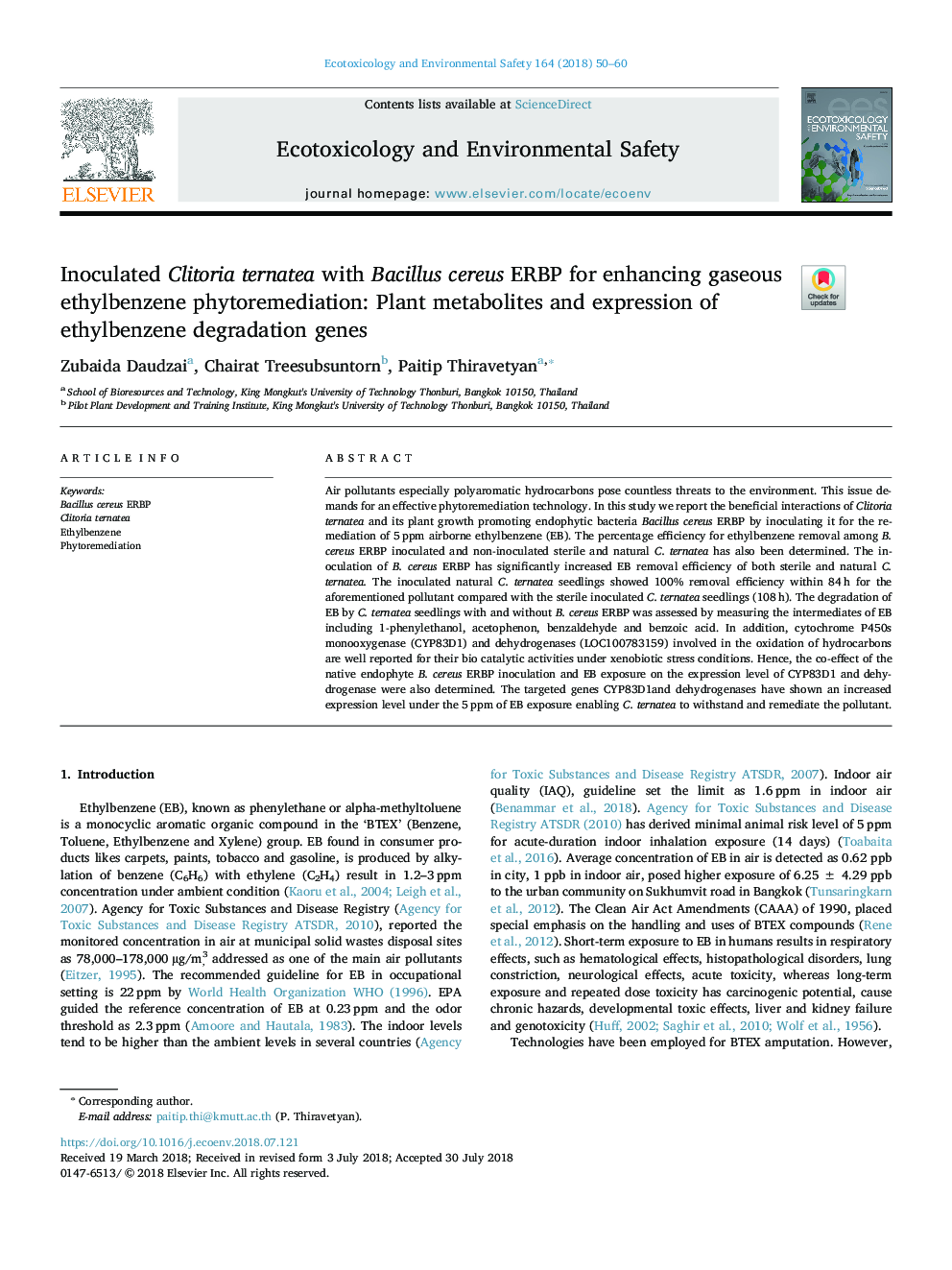| Article ID | Journal | Published Year | Pages | File Type |
|---|---|---|---|---|
| 8853134 | Ecotoxicology and Environmental Safety | 2018 | 11 Pages |
Abstract
Air pollutants especially polyaromatic hydrocarbons pose countless threats to the environment. This issue demands for an effective phytoremediation technology. In this study we report the beneficial interactions of Clitoria ternatea and its plant growth promoting endophytic bacteria Bacillus cereus ERBP by inoculating it for the remediation of 5â¯ppm airborne ethylbenzene (EB). The percentage efficiency for ethylbenzene removal among B. cereus ERBP inoculated and non-inoculated sterile and natural C. ternatea has also been determined. The inoculation of B. cereus ERBP has significantly increased EB removal efficiency of both sterile and natural C. ternatea. The inoculated natural C. ternatea seedlings showed 100% removal efficiency within 84â¯h for the aforementioned pollutant compared with the sterile inoculated C. ternatea seedlings (108â¯h). The degradation of EB by C. ternatea seedlings with and without B. cereus ERBP was assessed by measuring the intermediates of EB including 1-phenylethanol, acetophenon, benzaldehyde and benzoic acid. In addition, cytochrome P450s monooxygenase (CYP83D1) and dehydrogenases (LOC100783159) involved in the oxidation of hydrocarbons are well reported for their bio catalytic activities under xenobiotic stress conditions. Hence, the co-effect of the native endophyte B. cereus ERBP inoculation and EB exposure on the expression level of CYP83D1 and dehydrogenase were also determined. The targeted genes CYP83D1and dehydrogenases have shown an increased expression level under the 5â¯ppm of EB exposure enabling C. ternatea to withstand and remediate the pollutant.
Related Topics
Life Sciences
Environmental Science
Environmental Chemistry
Authors
Zubaida Daudzai, Chairat Treesubsuntorn, Paitip Thiravetyan,
